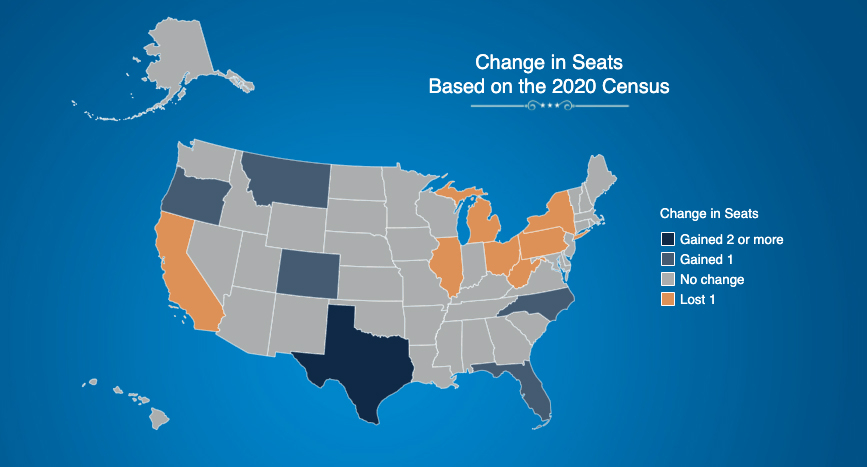For the fifth consecutive decade, Michigan will lose a seat in the U.S. House due to population changes that will shift the sands of the nation’s political terrain.
Michigan is among the six states that will surrender a seat based on new U.S. Census numbers. Seven states will gain, with Texas picking up two spots in the House chamber. Michigan will also lose one vote in the Electoral College.
While Michigan’s population rose slightly, by 2 percent to 10,084,442, that growth fell behind many other states.
For the Great Lakes State, political clout peaked in the 1960s and 1970s at 19 representatives in the House. Since then, with relatively stagnant population and economic troubles that caused workers to bolt for the Sunbelt, the state’s representation on Capitol Hill has fallen by about one-third.
The decline took the Michigan delegation to 18 members in the ‘80s, down two to 16 in the ‘90s, and a loss of one seat per decade after that, leaving us with 13 representatives for the next 10 years starting in 2022.
According to the Census Bureau, 13 will equal the Michigan representation in the 1910s and ‘20s. In those days, Michigan had more congressmen (yes, it was all men) than California, our largest state for the past half century. Florida, at that time, had just four seats.
The new numbers released on Monday show that, for the first time, California will lose a seat. And Florida will surpass New York, the powerhouse of Washington politics during the first half of the 20th Century, with 28 seats.
Fill out those census forms
The once-a-decade push from the federal and state governments for people to fill out their census form fell flat in 2020, largely due to the pall cast across the nation by the Covid-19 pandemic. Officials widely acknowledge that an undercount resulted in most states and particularly in metropolitan areas, including Detroit.
If the Michigan count had gained just 5,700 more people, the state could have kept that lost congressional seat. The picture is much more dramatic in New York. The Empire State’s lost House seat would have been salvaged if just 89 more people had completed a census form.
Do we need a much larger Congress?
The apportionment of House districts is based on fairly basic equation: 1 seat for each 761,000 people (approximately). The 2020 figures are sure to stoke the debate over whether the 435-seat House of Representatives should be expanded substantially.
Proponents say a member of Congress can’t adequately represent three-quarters of a million people, especially in sprawling rural districts. And they point out that such populous districts were not what the Founding Fathers had in mind.
The original Congress of 1789 featured a House where each member represented about 30,000 people. The number of representatives was raised after each decade’s census count but the increases failed to keep up with population gains. By 1911, when each district included about 200,000 people, the membership was capped at 435.
Consider this: If the ratio of 30,000 people per representative had been maintained – a provision some Founders sought as a constitutional mandate — the current House would consist of 11,000 members.
I don’t think that will ever happen. But if anything close to that amount rises to the surface, one thing is for sure.
We’re gonna need a bigger Capitol.
Trivia question
If I asked what was the largest number of seats ever in the House, you would probably quickly set aside the prospect of a trick question and answer with the obvious: The current 435 is the amount that has been fixed in place for a century.
But you would be wrong. In 1959, when Alaska and Hawaii were granted statehood, each were also granted a House seat, putting the House membership temporarily at 437. The Census Bureau explains that the 1960 apportionment process reverted back to 435 seats divided among the 50 states.







